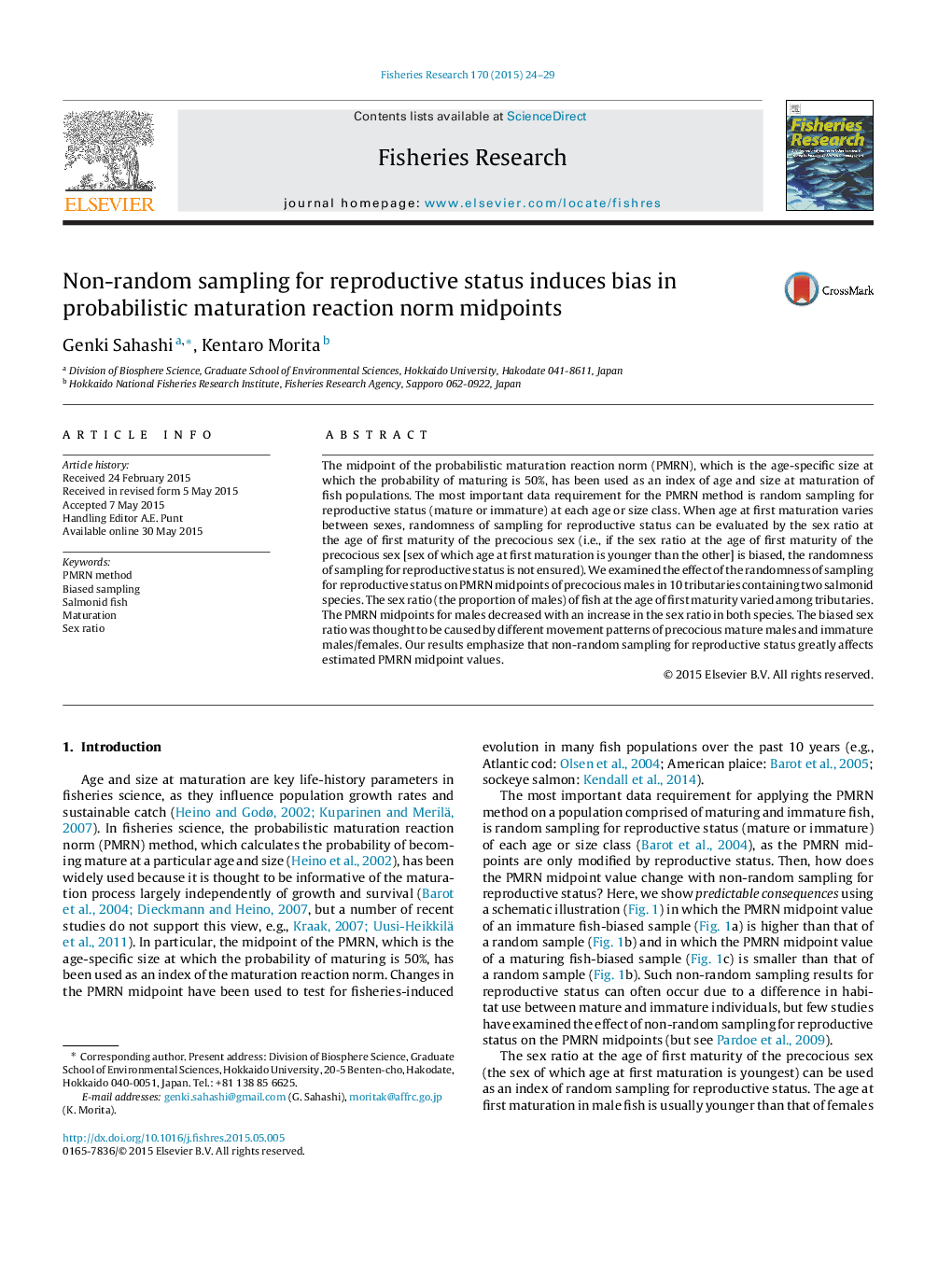| Article ID | Journal | Published Year | Pages | File Type |
|---|---|---|---|---|
| 6385483 | Fisheries Research | 2015 | 6 Pages |
Abstract
The midpoint of the probabilistic maturation reaction norm (PMRN), which is the age-specific size at which the probability of maturing is 50%, has been used as an index of age and size at maturation of fish populations. The most important data requirement for the PMRN method is random sampling for reproductive status (mature or immature) at each age or size class. When age at first maturation varies between sexes, randomness of sampling for reproductive status can be evaluated by the sex ratio at the age of first maturity of the precocious sex (i.e., if the sex ratio at the age of first maturity of the precocious sex [sex of which age at first maturation is younger than the other] is biased, the randomness of sampling for reproductive status is not ensured). We examined the effect of the randomness of sampling for reproductive status on PMRN midpoints of precocious males in 10 tributaries containing two salmonid species. The sex ratio (the proportion of males) of fish at the age of first maturity varied among tributaries. The PMRN midpoints for males decreased with an increase in the sex ratio in both species. The biased sex ratio was thought to be caused by different movement patterns of precocious mature males and immature males/females. Our results emphasize that non-random sampling for reproductive status greatly affects estimated PMRN midpoint values.
Related Topics
Life Sciences
Agricultural and Biological Sciences
Aquatic Science
Authors
Genki Sahashi, Kentaro Morita,
